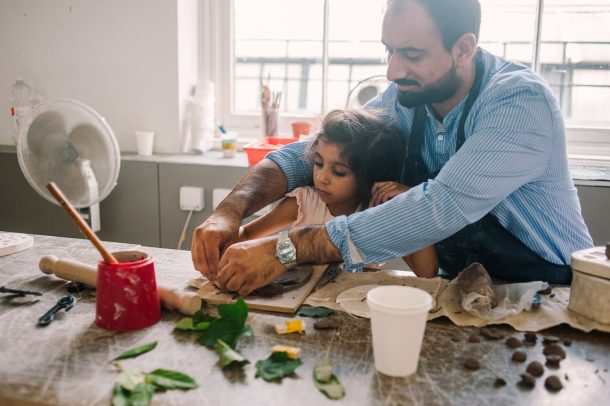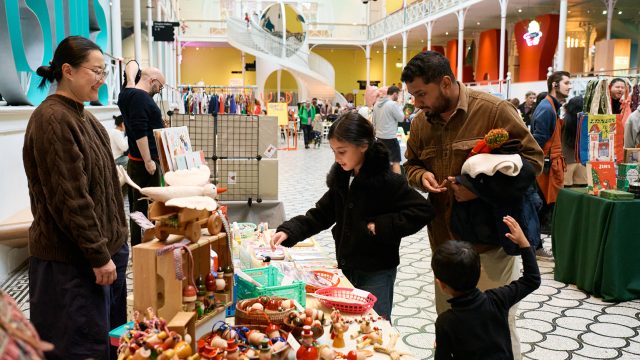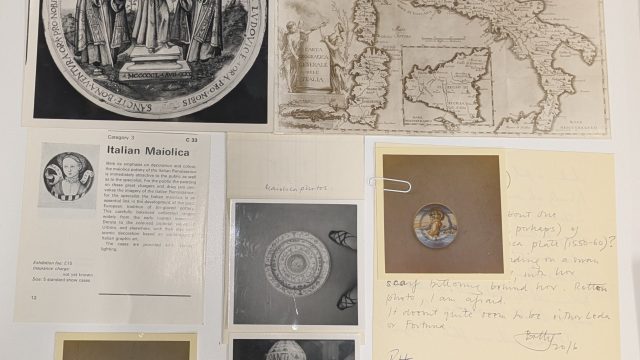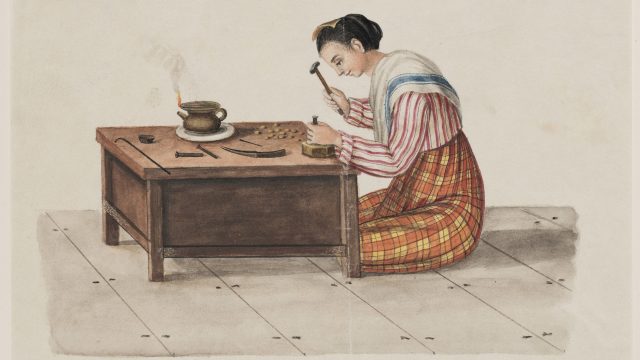
The V&A Museum of Childhood (MoC) FuturePlan project aims to build creative confidence in future generations in a fast-changing and uncertain world. Understanding how early-years childhood development intersects with museum learning is a critical part of shaping the future MoC.
Our brains develop fastest in the first five years of our lives. The more a child is engaged with new ideas, objects, and experiences, the more neural pathways grow and strengthen in a their brain. In designing the new Museum of Childhood to build creative confidence, from the youngest of minds as they develop from birth into young adulthood, we are learning a lot from the research of inspirational leading thinkers and practitioners in childhood development, such as Alison Gopnik and Kathy Hirsh-Pasek. Their work provides theoretical foundations to our co-design process with children as we develop concepts and content for the future MoC’s creative programme.
Research by specialists in the fields of early years development and neuroscience is key in how we design, layout and curate our new museum. A co-design process with children ensures that everything from lift buttons to library, from garden to galleries, the Museum of Childhood will be a creative space to imagine, play and design. By using design thinking to approach childhood development, we are able to think laterally about how young minds will use and explore this space.
For example, the design theory of ‘divergent thinking’ resonates with leading neuroscience in childhood development. Design thinking starts with putting our minds into a divergent space. This is a space of the imagination, where anything and everything is possible, of exploration, of possibility, of making our thinking wide and open, of amplifying the potential of ideas. This is the space of the ‘what if?’ and ‘how might we?’ questions, of openness, outwards facing, untrammelled by constraints (these come later as the design brief is defined).
Now let’s think about the neuroscience of early childhood development and how the brain develops, drawing on Gopnik’s brilliant book The Philosophical Baby. A baby’s brain is especially honed for imagination and learning. They have vastly more neural pathways that are massively more connected than those of adult, mature brains. As we grow older, through interaction with the world – and most significantly through social interaction with carers – these pathways are pruned so that those most regularly used (and therefore most needed) are strengthened while the weaker ones fall away.
This neural richness means that the infant brain is far most flexible – has greater plasticity – than the adult brain. But because it is so highly engaged in the process of exploring the world it is far less efficient and focused than the mature brain – as any early years parent trying to make it out the door on time to visit the MoC with a toddler in tow will no doubt attest! Therefore, when we design the new Museum of Childhood, we want to create a space where any young mind can explore new collections, ideas and experiences.
Earlier this year, accompanied by my teenage daughter – we both had a vested interest – I heard cognitive neuroscientist Sarah Jane Blakemore speak at the Hay Festival on the teenage brain. Of particular relevance here were her insights on new findings about the time it takes for the prefrontal cortex to mature. The prefrontal cortex is that part of the brain that has been described as the seat of distinctly human abilities for thinking, planning and impulse control. In brief, it develops more slowly than had hitherto been understood. The downside (perhaps felt most keenly by parents of teenagers …) is that maturity may not be complete until the mid-twenties. Indeed, so marked is this difference in the rate of maturity that the neurological definition of adolescence has apparently been extended.
I’d like to posit that there is an upside to this new insight for young people. When it comes to imagination and learning, prefrontal immaturity creates greater possibilities for creative, divergent thinking. This gives a neurological basis to the oft quoted observation that ‘Every child is an artist. The problem is how to remain an artist once he grows up’.
And that’s not all. The space of divergence in design thinking is a space of uninhibited imagination. Anything goes! All ideas are valid! Push the envelope! To turn to Gopnik again, the activity that the prefrontal cortex is especially involved in is inhibition. In this context inhibition means shutting down unnecessary neural pathways so that the brain can develop the ability to focus. This ability is vital for complex thinking, planning and acting – in design thinking terms, for that moment of ‘problem definition’ and refinement of the design brief that draws on and prunes the richness of ideas generated in the divergent phase.
The synergies between early years brain development and a creative, design-led process underlines the critical role of co-design with children in our vision to transform the Museum of Childhood from a material history museum to a forward facing creative incubator for learning through imagination, play and design. Children bring a divergent quality to their creative thinking that will infuse the entire project. In my next post I will think more about where play, and in particular learning through play, might map into design thinking’s experimental and iterative practices.
And in the meantime look out for a post soon on co-design from the MoC team and our brilliant base build architects De Matos Ryan.



Very interesting article , i really like it
Very interesting read I must say. Keep writing amazing content.